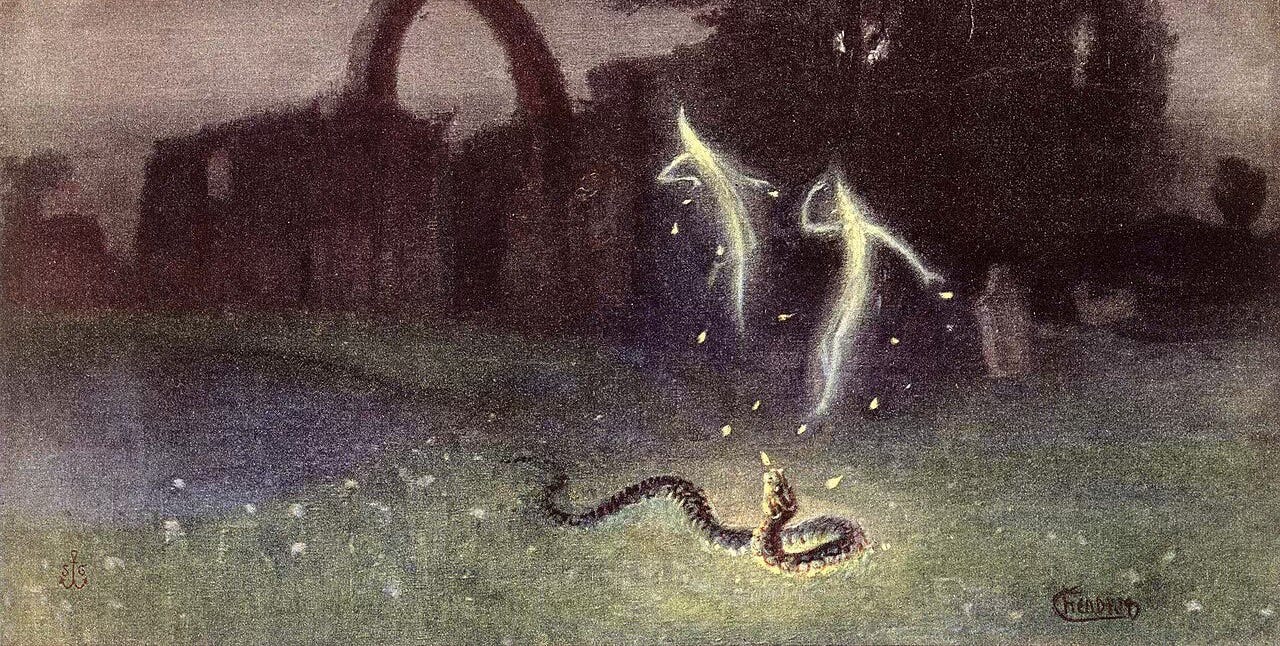Has the ignition source of Will-o'-the-wisps been solved?
No. No, it hasn't. Because there's no reason to think they're a thing to begin with, and this paper was shite.
This week Science — perhaps the world’s most reputable scientific journal — ran an editorial promoting a research paper published in PNAS (Proceedings of the National Academy of Sciences of the United States of America). The paper presented the claimed solution to legendary stories about the will-o’-the-wisp and other ghost lights spotted briefly in spooky forests through the centuries.1
I’m not going to go into the nitty gritty gritty details — the paper is in the footnotes below — but in brief, the paper claims that such ghost lights are likely the result of methane (swamp gas) being ignited by a complex interaction between underwater bubbles under hyper-specific conditions. In these conditions, a tiny lightning bolt can jump between bubbles, becoming a hot arc that can ignite the methane.
The paper has immediately been savaged by reviewers; something Science’s editors might have looked into before publishing. Rightfully so. I can sum up the criticism in a single phrase: This is an explanation in search of an observation.
Science works the other way. We take a replicable observation, and we try to explain it. (Will-o’-the-wisps have never been replicable, nor even reliably documented.) Instead, the PNAS authors took old fairy tales, began with the assumption that these were factual retellings of literal events, and set about constructing a Rube Goldberg solution that they felt might explain it.
When I first saw this article (hat tip to Gordon V. for sending it to me), I suspected this was one of a growing breed of science articles where the authors feared it was, by itself, not very interesting to the general public, and so they attached a press release referencing a famous mystery to it. I’ve previously written about one such example, where some guys had something about an unremarkable type of slide plane in snow, so they had their press agent scream DYATLOV PASS MYSTERY FINALLY SOLVED!!!
But no, freakishly, this paper was just what it claimed to be: a scientific “solution” to something that has never been reliably observed in nature.
Its problems are myriad. Other scientists more familiar with the intricacies involved have given their responses, and I have mine. Let’s go through the list. I’ll start with mine:
Throughout my 19 years at Skeptoid I’ve dealt with any number of claims from wooists trying to attach sciencey-sounding explanations to mysterious lights that have never really been confirmed to exist in the first place; and as Hyman’s Categorical Imperative states: “Do not try to explain something until you’re sure there is something to be explained.” Most of these explanations have to do with methane, aka “swamp gas” — including some from “skeptical” UFOlogists. Methane, when ignited, does not hover around as glowing orb, moving ghostfully through the swamp trees, accompanied by theremin music. No. It burns explosively, instantly, with a loud pop. Ignited methane is not remotely an explanation for will-o’-the-wisps in any folk tale. I don’t care whether they say they’ve found a novel way for methane to auto-ignite or not.
But now, from the experts:
Keep reading with a 7-day free trial
Subscribe to Brian’s Bullshit-Free Zone to keep reading this post and get 7 days of free access to the full post archives.


